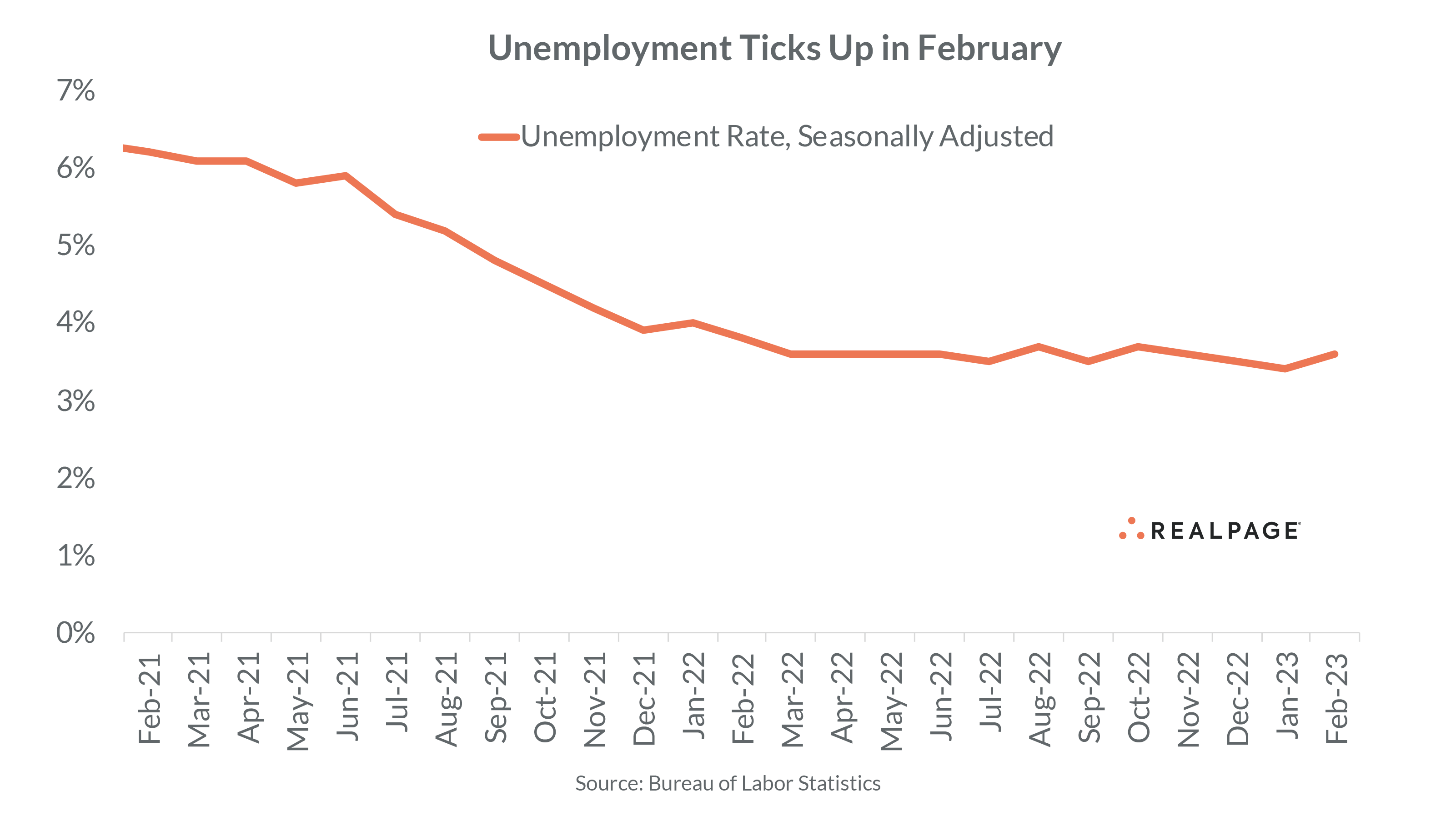The U.S. labor market has remained resilient despite historic interest rate hikes to curb inflation. Job growth in the U.S. eased in February but remained above expectations. And while the U.S. unemployment rate increased, it remained historically low. Employers’ steady demand for labor is keeping pressure on wage growth, and yet, pay increases aren’t keeping up with high inflation.
Roughly 311,000 employees were added to payrolls in February 2023, according to the Bureau of Labor Statistics (BLS). That was a better result than the roughly 225,000 jobs economists projected for the month, but well below January’s gain of 504,000 jobs. In addition, recent job gains were below the monthly average of around 399,000 jobs added in 2022, but well above the average of roughly 190,000 jobs added each month prior to the pandemic from 2015 to 2019.
On an annual basis, the nation gained roughly 4.34 million jobs during the year-ending February 2023. Although down from the annual gains recorded throughout much of 2021 and 2022, it was well above the average of around 2.4 million jobs added annually from 2015 to 2019.
Downward revisions to December 2022 data showed 21,000 fewer jobs were added than previously reported, down to 239,000 jobs. The January 2023 job growth number was also revised down, with 13,000 fewer jobs, to a total of 504,000 jobs. With these revisions, employment gains in December and January combined were 34,000 positions lower than previously reported.
The U.S. economy has recovered all the net jobs lost during the COVID-19 pandemic. As of February, the nation had nearly 3 million more jobs (+2%) compared to the pre-pandemic employment level from February 2020.
Jobs by Industry
Job growth in February was most notable in Leisure and Hospitality Services and Education and Health Services. On the other hand, employment declined in Information, Manufacturing and Financial Activities.
Most job sectors have recovered all the jobs lost during the COVID-19 pandemic downturn. Professional and Business Services has seen the best recovery, with today’s job count coming in nearly 1.5 million positions ahead of February 2020 numbers. Trade, Transportation and Utilities is also well ahead of pre-pandemic norms, with employment up more than 1.1 million jobs.
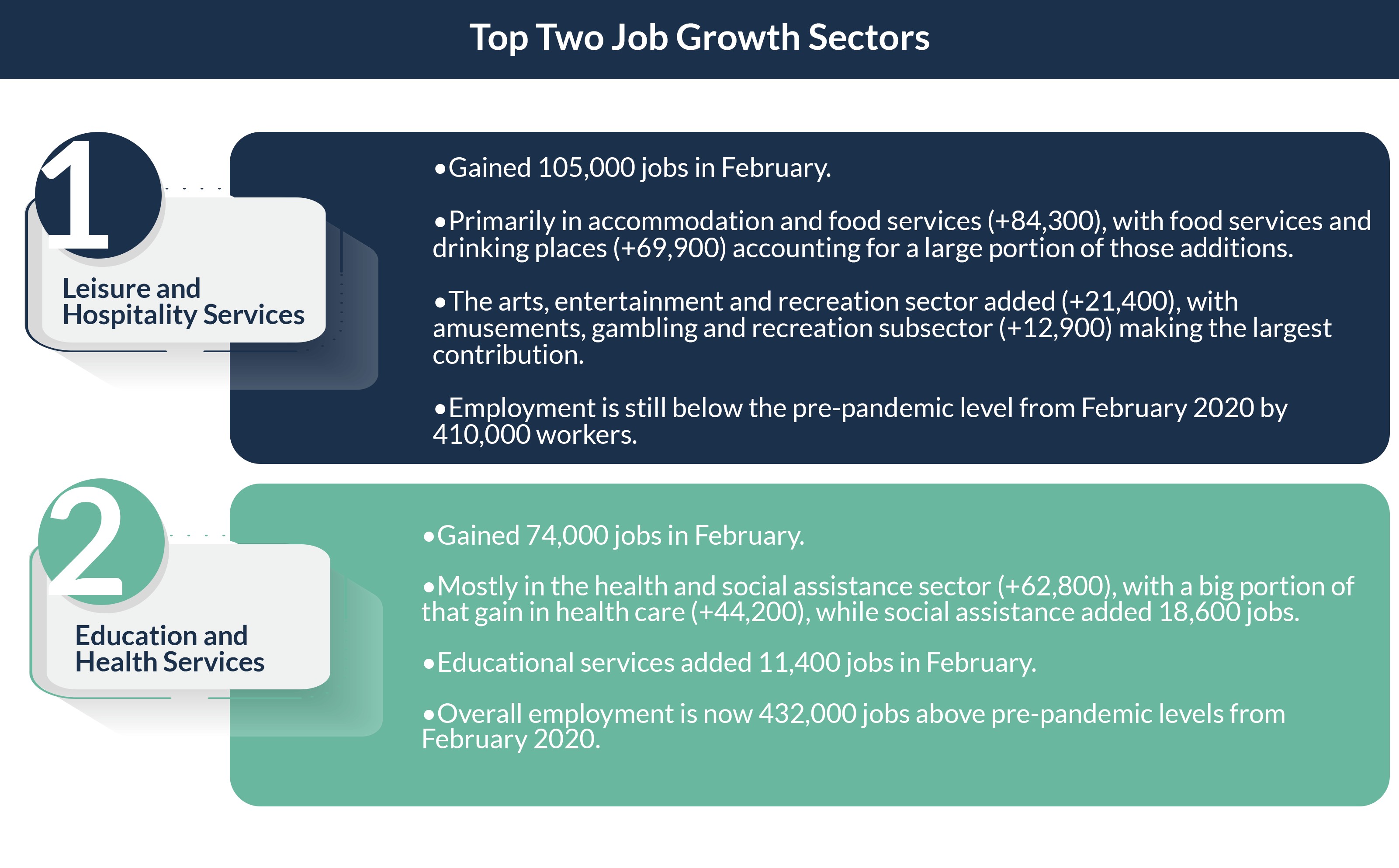 Alternatively, some of the harder-hit sectors remain below pre-pandemic job counts. Despite recent gains, employment in the Leisure and Hospitality Services sector is still well below its pre-pandemic employment count, by roughly 410,000 workers. The Government sector is about 376,000 jobs behind February 2020 levels. Other industry sectors yet to recover all jobs lost during the COVID-19 downturn include Other Services (-114,000 jobs) and Mining and Logging (-55,000 jobs).
Alternatively, some of the harder-hit sectors remain below pre-pandemic job counts. Despite recent gains, employment in the Leisure and Hospitality Services sector is still well below its pre-pandemic employment count, by roughly 410,000 workers. The Government sector is about 376,000 jobs behind February 2020 levels. Other industry sectors yet to recover all jobs lost during the COVID-19 downturn include Other Services (-114,000 jobs) and Mining and Logging (-55,000 jobs).
 Unemployment
Unemployment
The unemployment rate (U3 or headline unemployment rate) edged up from the 54-year low of 3.4% in January to 3.6% in February. Despite the upturn, it was still one of the nation’s lowest unemployment rates over the past 70 years. Over the past year, the unemployment rate has been in a narrow range of 3.5% to 3.7%. At the onset of the pandemic, the unemployment rate climbed to 14.7% in April 2020. Prior to the pandemic, the unemployment rate clocked in at 3.5% to 5.7% from 2015 to 2019, averaging 4.4% during that period.
The total number of unemployed in the U.S. edged up to roughly 5.9 million in February, with that measure showing little movement since early 2022.
The unemployment rate for adult men increased 10 basis points (bps) from January to February, rising to 3.3%. The unemployment rate for adult women also increased 10 bps, climbing to 3.2%. Meanwhile, the unemployment rate for teenagers jumped 80 bps from 10.3% in January to 11.1% in February.
Across the 12 major industries, unadjusted unemployment rates declined in half from January to February. Decreases were recorded in Leisure and Hospitality Service (down 80 bps to 5.2%), Information (down 70 bps to 3.2%), Construction (down 30 bps to 6.6%), Government (down 20 bps to 1.7%), Other Services (down 20 bps to 3.1%) and Financial Activities (down 10 bps to 2.2%). The unemployment rate in Education and Health Services was unchanged from January to February, at 2.4%. Conversely, the biggest increase in unemployment was recorded in the Mining industry, up 270 bps to 3%. Professional and Business Services also recorded a notable upturn, rising 70 bps from January to February, to 4.2%.
The highest industry unemployment rates (not seasonally adjusted) in February were in Construction (6.6%), Wholesale and Retail Trade (5.4%) and Leisure and Hospitality Services (5.2%). The lowest unemployment rates were in the Government (1.7%) and Financial Activities (2.2%) sectors.
Average Hourly Earnings
Average hourly earnings among employees on private nonfarm payrolls rose $0.08 (+0.2%) from January to February. That monthly increase took average hourly earnings to $33.09 in February. On an annual basis, average hourly earnings were up $1.46, a 4.6% increase year-over-year. However, wages were outstripped by inflation, as the Consumer Price Index (CPI) rose 6.4% in the year-ending January.
Wage growth over the past year varied by industry, ranging from a year-over-year increase in hourly wages of 3.7% among Manufacturing and Mining and Logging employees, to a jump of 6.9% among Leisure and Hospitality Services workers.









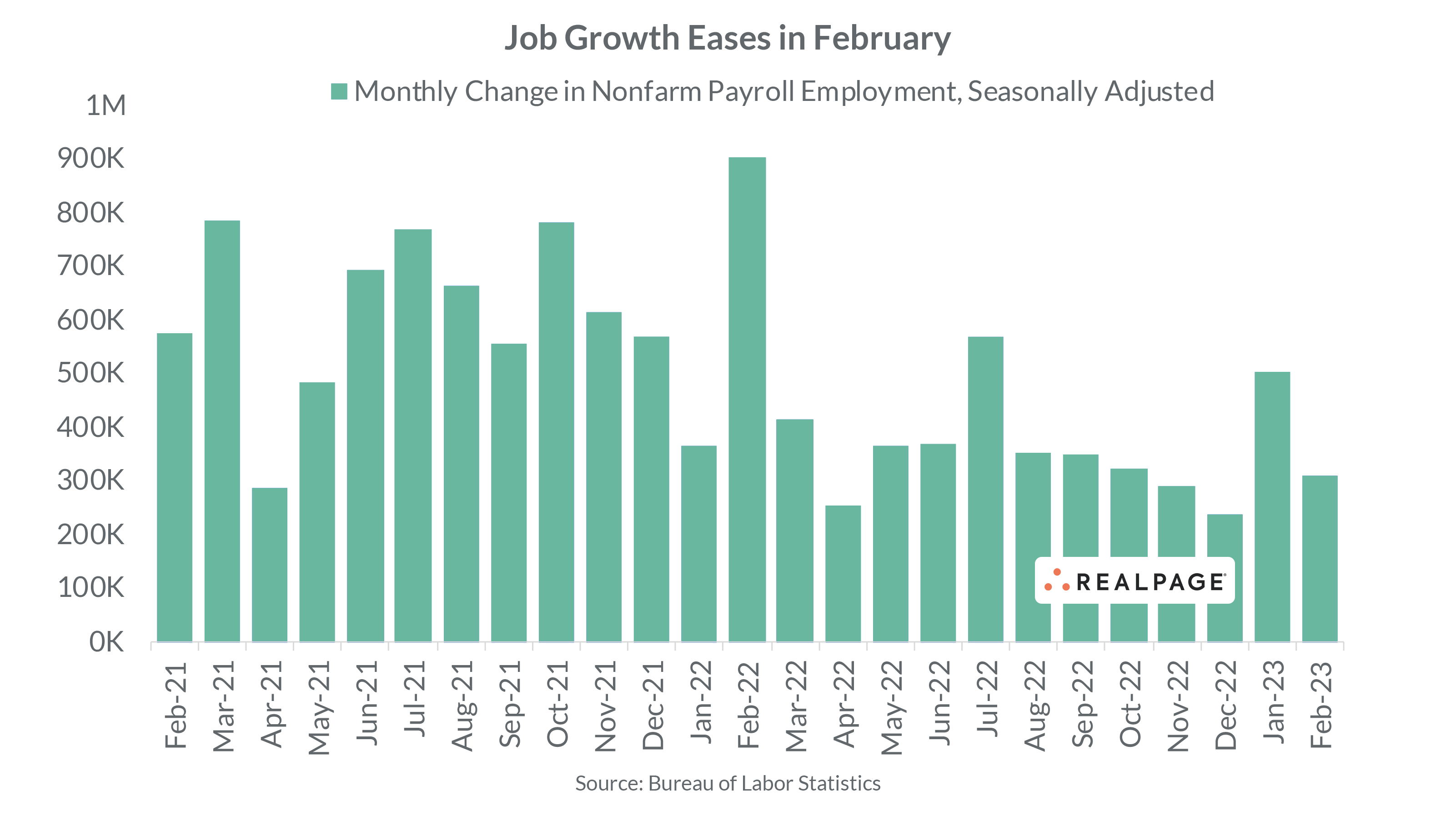
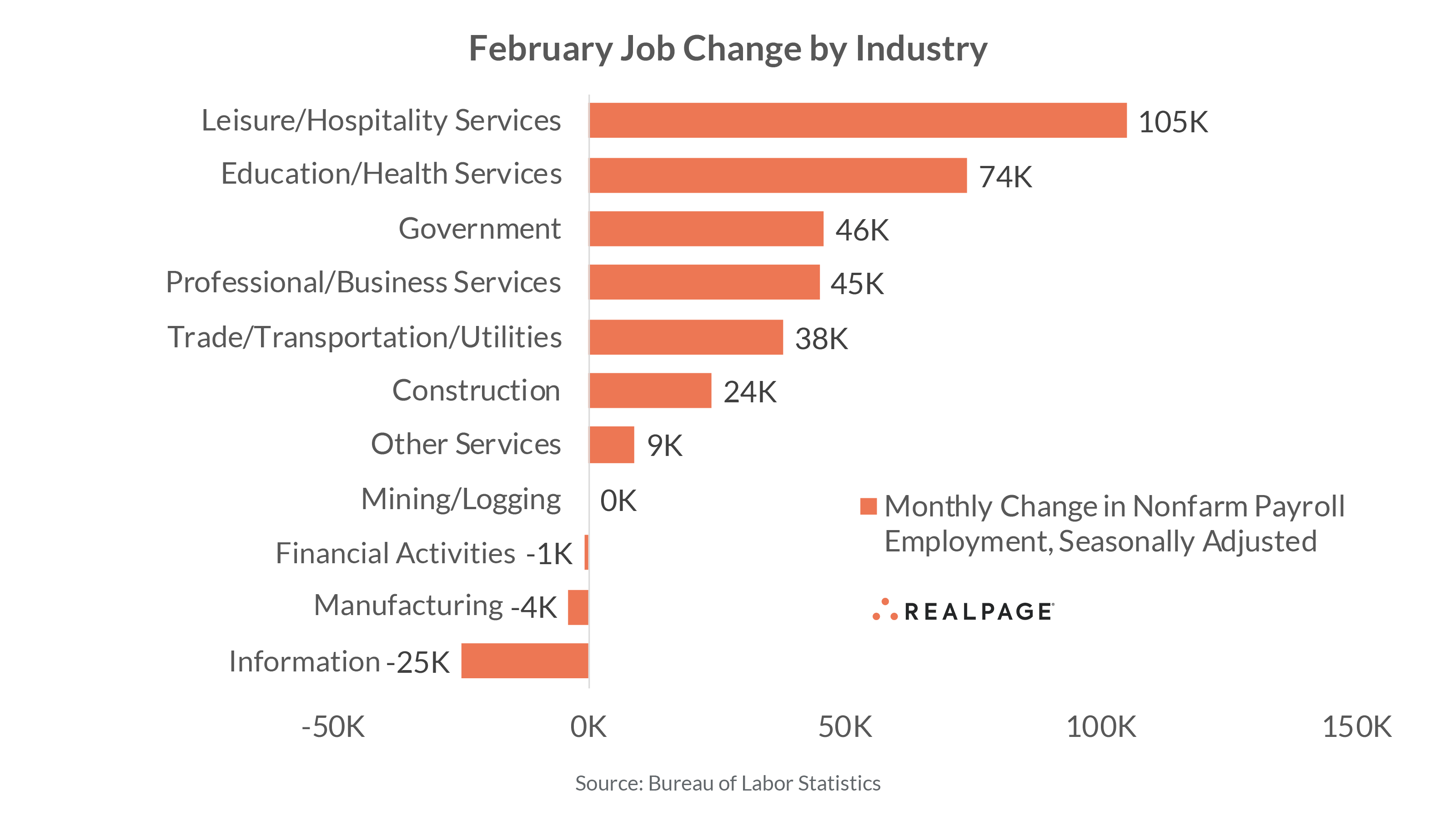
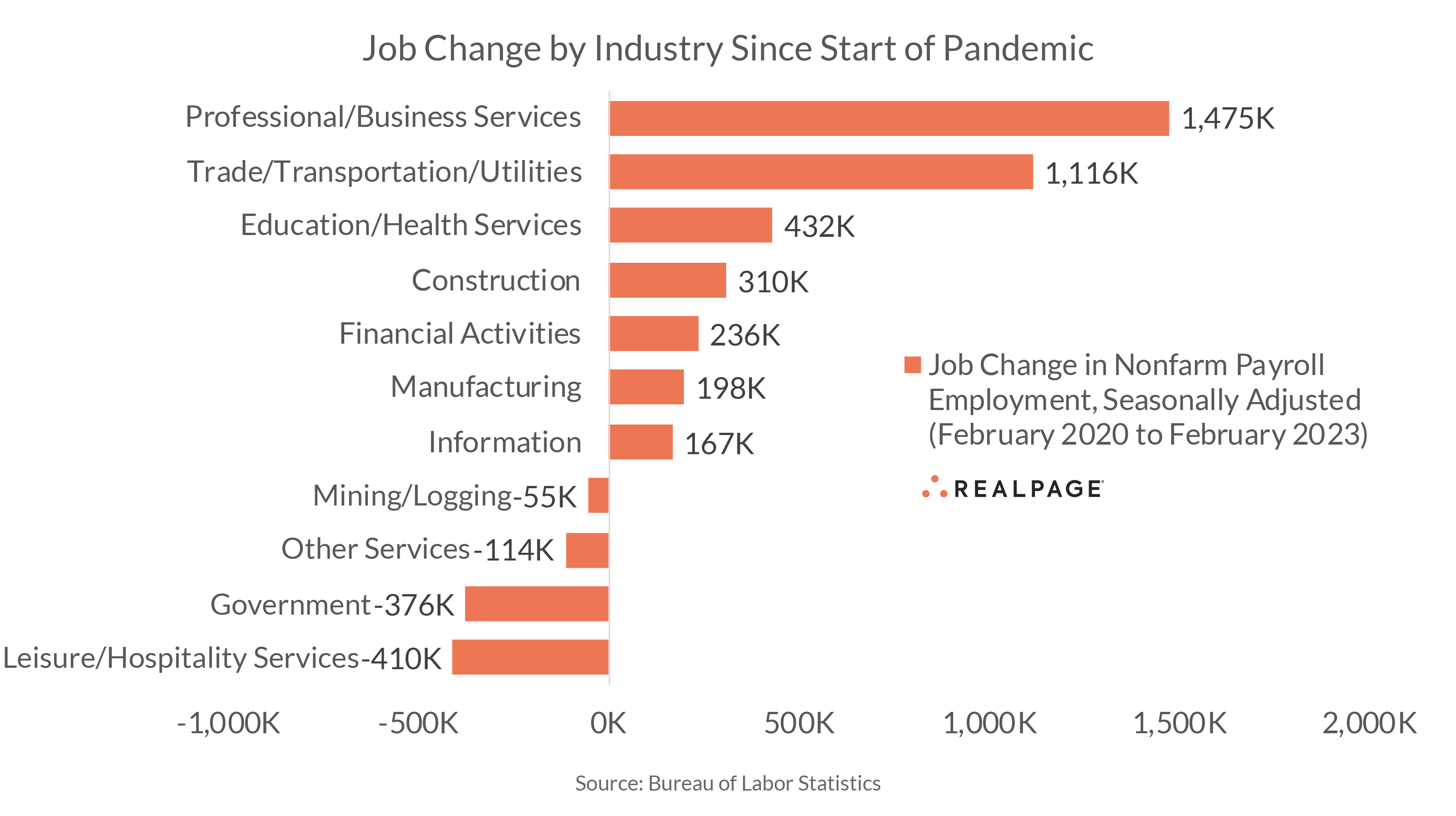 Unemployment
Unemployment